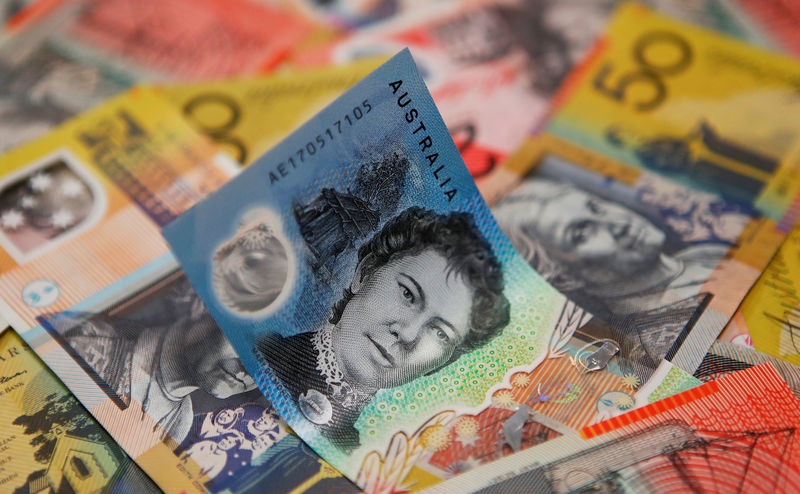By Wayne Cole
SYDNEY, Nov 2 (Reuters) - The Australian dollar touched a 15-week low on Monday as more coronavirus lockdowns internationally darkened the outlook for global growth, though upbeat data at home offered some support.
The Aussie was pinned at $0.7017 AUD=D3 , having hit its lowest since mid-July at $0.6997. A sustained break of support in the $0.7000/06 area could open the way for a retracement to at least $0.6920.
The New Zealand dollar eased to $0.6601 NZD=D3 and hit its lowest in almost two weeks at $0.6591. It has major chart support in the $0.6545/55 zone and the September trough of $0.6512.
The commodity-sensitive currencies have been slipping as shutdowns across Europe threatened to drag on global demand, with England being the latest to act. both countries have been relatively successful in containing the virus, helping their domestic economies to recover some ground.
Australian data out Monday showed approvals to build new homes surged 15.4% in September as buyers rushed to snap up mortgages at record-low interest rates.
That demand saw national home prices end a five-month losing streak in October with a rise of 0.4%, confounding fears the market could be down 10% by year end. advertisements also showed a continued revival in October with a rise of 9.4%, though analysts suspect unemployment will stay unacceptably high for some time yet.
The Reserve Bank of Australia (RBA) has signalled its readiness to act and markets look for a rate cut and a shift to quantitative easing (QE) at a monthly policy meeting on Tuesday. on three-year bonds AU3YT=RR have dropped to 0.13% in expectation the RBA will trim its yield target to 0.1%, while expanding its bond purchase program by around A$100 billion.
Ten-year yields AU10YT=RR have so far lagged behind at 0.82%, in part because U.S. Treasuries have sold off.
Prashant Newnaha, a senior Asia-Pacific rates strategist at TD Securities, reckoned Aussie debt could outperform Treasuries once the RBA started buying in earnest.
He noted that foreign official accounts held a relatively high 31% of outstanding Australian government debt and these tended to keep assets for the long term.
If combined with the debt already held by the RBA and that by local banks for capital reasons, the share of bonds freely available to buy might only be a third of the total outstanding.
"This means a RBA QE program could drive bond yields substantially lower," argued Newnaha, citing 0.50% as achievable for 10-year bonds.
(Editing by Ana Nicolaci da Costa)
